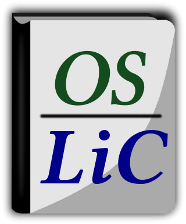OSLiC, the Open Source License Compendium is a guideline to enable companies and other groups easily to enable their guys to act according to the Open Source Licenses.
As an employee of Deutsche Telekom AG and as Principal Open Source Advisor in the Telekom Open Source Program Office, I had the honor to develop and maintain this e‑Book for decades. The readme file in the GitHub repository describes the goals in something like this:
The abbreviation OSLiC stands for ‘Telekom Open Source License Compendium’. The file name or package name is ‘oslic’. This work shall be a reliable specification of how open-source software can be used in a regular manner. In particular, it shall …
- support Open Source users to act according to the Open Source License requirements without having to become license experts themselves
- offer strongly reliable and quickly accessible instructions (to-do lists) on how to fulfill a touched Open Source license
- consolidate reliable background knowledge by gathering and verifying information from the net and from libraries
The OSLiC is a set of LaTeX files, BibTex files, and Makefiles by which any user can compile this compendium as PDF file. Deutsche Telekom has decided to release OSLiC under CC BY-SA 3.0 Germany. Subsequently, OSLiC became the basis for OSCAd and OSCake.
And in what way is this …
… part of the overarching topic FOSS Compliance? For fulfilling the requirements of FOSS licenses, we have to consider specific individual cases as well as side effects — for software, pictures, or documents. We should unhide trends and write guidelines. Above all, however, we must drive forward the automation of license fulfillment, make our licensing knowledge freely available, cast it into smaller tools, and bring it into larger systems: Because FOSS thrives on freedom through license fulfillment, large and small. That’s what also this article is about.
